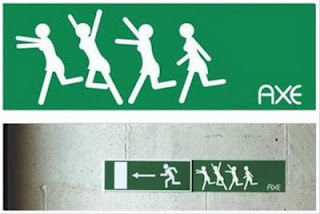I began to delve deeper into the realms of animation and began to explore the range of endless means and techniques of producing a piece of animated work. Mary gave us an insight into what is known as 'kinetic typography, so I felt his would be a good place to start.
Kinetic typography to use the online definition is
"is an animation technique that requires the mixing of motion and text to express ideas using video animation. This text is presented over time in a manner intended to convey or evoke a particular idea or emotion".
Kinetic typography instantly hit me as something exciting, fresh and inspirational. I enjoy the sense of freedom that is giving to the words as they move about the screen in an array of transitions and how the text can add so much more meaning or emphasis to quote/ phrase taken from the audio. What no doubt helped my enjoyment of kinetic typography was that a lot of the better examples I came across were from some of my all time favourite films; Snatch, Lock Stock and Pulp fiction. I found that knowing the film, made the motion graphics even more fascinating, as they provided me with the same data/ audio that I have experience numerous times by watching the films in a new, fresh form of media. Although our society is not known for our adaption to change, I feel within the digital world, being able to adapt and take in change through different forms of media will only make you enjoy and appreciate how good and inspiring pieces of work are, and that is exactly what has happened for me.
Below are a few examples of my favourite pieces of kinetic typography found on Youtube.
This is one of my all time favourite scenes in Lock Stock and I feel the use of motion graphics really emphasis the dramatic and cutting edge tension within the scene. The use of splat graphics to portray the idea of blood being spilt is so simple, yet so effective and also the transformation and rotation of the explanation marks, to create the allusion of them daggering into the screen is incredible and a technique I would indefinitely incorporate into my work, if I chose to follow this lead of animation.
I also feel the choice of colour scheme is spot on and really adds to the cutting edginess of the scene. The harsh contrast between the rough black font and the bright yellow background ensures the viewers eyes are transfixed on the motion of the text, it then reverses half way through to black background and yellow text as the subject of the audio becomes deeper and darker. I feel this is an effective and simple way to use colour to emphasise the change in tone within the subject of the audio.
I find this one of the most interesting examples of kinetic typography because of its subject. There is a range of mediums within this, first of all a film about the development of a website, which a scene has then been adapted into an animation film of motion graphics, oh the digital world of today.
Focusing on the animation itself, I think its excellent. I like the attention to detail of matching the colour schemes, its simple but it adds that house style and continuity through the range of media forms. One of the aspect of this animation that I really enjoy and would love to experiment and try to incorporate myself, is the fast paced, whip style movement that adds to the vibrancy and excitement of the audio and also how the words interact with one another by fitting within each other, moving and breaking off of one another, solely one word dropping from one sentence to fit into the next and how some words are brought to the forefront to add and accentuate the specific points within the audio.
I carried on searching around youtube, looking at hundreds of typo animations in the hope of picking out little details/ transitions/ effects etc that grabbed my attention. The above animation is from a Jay-z song, which again shows another incorporation of a different medium. What stood out for me in this animation and inspired me to think that kinetic typography is something I really want to get into, is the way the words seem to whip out towards the audience and trails behind a blur to add emphasis to the speed of the lyrics.
I think its a clever and effective effect as it plays on the shock factor within the audience and consequently captures their attention instantaneously.


















































